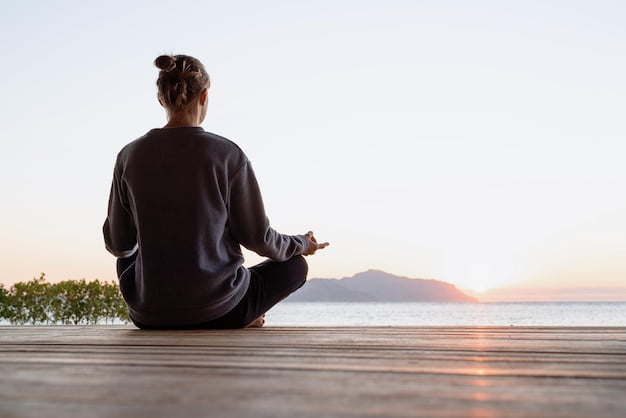
Introduction
Restless Leg Syndrome (RLS) is a neurological disorder characterized by uncomfortable sensations in the legs, often accompanied by an irresistible urge to move them. This condition can significantly impact sleep quality and overall well-being. While there is no cure for RLS, various treatment approaches aim to alleviate symptoms and promote relaxation. Meditation, with its calming effects on the mind and body, has shown promise in providing relief for individuals with RLS. In this article, we will explore the potential benefits of meditation as a complementary strategy for managing RLS symptoms.
Understanding Restless Leg Syndrome
- Restless Leg Syndrome: A Brief Overview
Restless Leg Syndrome is a condition that affects the nervous system, causing an uncontrollable urge to move the legs. The symptoms typically worsen during periods of rest or inactivity, such as when sitting or lying down. People with RLS often describe the sensations as tingling, itching, burning, or a “creepy-crawly” feeling. These sensations can be temporarily relieved by movement, but they tend to return when the legs are at rest again.
- Impact on Sleep and Well-being
RLS can significantly disrupt sleep patterns, leading to fatigue, daytime sleepiness, and decreased quality of life. The constant urge to move the legs can make it challenging to fall asleep and stay asleep, resulting in sleep deprivation and subsequent daytime fatigue. Furthermore, the persistent discomfort and restlessness associated with RLS can cause emotional distress, anxiety, and difficulty concentrating.
Meditation as a Potential Relief Strategy
- The Calming Effects of Meditation
Meditation is a practice that involves training the mind to focus and redirect thoughts, ultimately promoting a state of calmness and relaxation. Research has shown that regular meditation practice can reduce stress, anxiety, and promote overall well-being. By engaging in meditation techniques, individuals with RLS may experience a sense of inner calm and improved ability to manage the discomfort in their legs.
- Mindfulness Meditation for RLS Relief
Mindfulness meditation, a form of meditation that involves focusing one’s attention on the present moment, has been particularly effective in managing chronic pain conditions. By cultivating an attitude of non-judgmental awareness towards their RLS symptoms, individuals can develop a more accepting and compassionate relationship with their leg sensations. Mindfulness meditation may help individuals with RLS reduce the anxiety and distress associated with the condition.
- Guided Imagery and Visualization
Another meditation technique that may benefit individuals with RLS is guided imagery and visualization. This practice involves mentally creating soothing and calming images or scenes that can help divert attention from the leg sensations. By engaging in guided imagery, individuals can create a mental sanctuary where they feel relaxed and at peace, potentially reducing the intensity of RLS symptoms.
Incorporating Meditation into Your Routine
- Creating a Meditation Practice
To incorporate meditation into your routine, start by designating a quiet and comfortable space where you can practice without distractions. Begin with short sessions, gradually increasing the duration as you become more comfortable. Various smartphone apps and online resources offer guided meditation recordings specifically designed to target relaxation and sleep, making them accessible and convenient for individuals with RLS.
- Experimenting with Different Techniques
Explore different meditation techniques to find what works best for you. Mindfulness meditation, loving-kindness meditation, or body scan meditations are a few examples to consider. Be patient and open-minded as you experiment with different approaches, as finding the right technique may require some trial and error.
- Integrating Meditation with Other Treatments
While meditation can be a valuable tool for managing RLS symptoms, it is essential to remember that it should complement, not replace, other recommended treatments. Consult with your healthcare provider about incorporating meditation into your overall RLS management plan, and follow their guidance regarding medication and lifestyle modifications.
Conclusion
Although there is no cure for Restless Leg Syndrome, incorporating meditation into your routine may provide relief and support overall well-being. The calming effects of meditation can help individuals with RLS manage the discomfort and restlessness in their legs, improve sleep quality, and reduce anxiety. By cultivating a regular meditation practice and exploring different techniques, individuals can empower themselves to better cope with RLS and its associated symptoms. Remember to consult with your healthcare provider for personalized guidance and to ensure a comprehensive approach to managing your condition.
